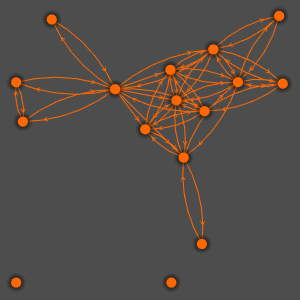

#COMPLEX PLOT WOLFRAM MATHEMATICA HOW TO#
See the display help page for instructions on how to animate several plots and display an animation with a background plot. The same command can be used to show a curve traced in time. This provides a method for examining the effects of a single parameter on the plot.

Many of the plots above can be animated on a parameter, which is defined when the animate command is called. The settings that are applied to the original plot are also applied to the new function, but if you use default settings, the grid automatically adjusts to display all expressions fully. These methods display multiple plots on the same axes, but they are all of the same type.Īn easy way to add functions or expressions to an existing plot is to select and drag the input or output of an expression or function definition onto the plot. Alternately, you can use the multiple command. With most of the commands above, you can enter a set of functions or expressions in place of a single function or expression. This command can also be used to animate one or more plots. Alternately, you can enter an array of plots into the display command, and plots can be displayed side-by-side. This command accepts multiple plots of different structures, as long as they are all of the same dimension, and allows any of the plot options to be defined for all of the plots being displayed. You can use the display command to display multiple plots on the same axes. The expression can be manipulated and the plot previewed with a Maplet, then output as either a plot or a plotting command. The interactiveparams command is useful for quickly viewing changes to certain variables in an expression. For performing many tasks with plots, see the links on the plotting overview page. For detailed instructions on using the plot builder interface, see interactive plot interface. Controls for plot options are grouped together by relevance and change dynamically in the panel. When you use the Plot Builder on an expression to be plotted, it provides a choice of plot types which are compatible with that expression. It is an interface with easy-to-use input fields and drop-down menus, allowing you to specify the options available for the plot you choose. Most of the above plots can be generated using the Interactive Plot Builder. The options apply only to the worksheet in which they are set, until either it is closed, or restart is called. You can set most plot options for an entire Maple session, using the setoptions command. More information about this feature is available on the plot/units help page. The plot and plot3d commands have been updated to recognize units in the function and range arguments, for both the expression-form and operator-form of the calling sequences. For more information, see the plot/typesetting help page. Typesetting for 3-D plots provides the ability to use typeset mathematics and text in titles, captions, axis labels and text objects, as well as the ability to edit them in place.
#COMPLEX PLOT WOLFRAM MATHEMATICA FREE#
You can also add text, 2-D math, various shapes, or free form drawing to a 2-D plot using a set of drawing tools. Also available is textplot, for adding text or 2-D math to an existing plot (or textplot3d for 3-D plots). Transformations involve rotation, translation, and scaling of any type of plot. Objects include geometric shapes, arrows, and points, and can be displayed either in existing plots or on separate axes. The plottools package provides commands to generate basic graphical objects and alter existing plot structures. Most of the options that can be applied to a plot command can also be applied interactively to an existing plot, by using the plot context menus. Each plot page indicates which of the options it accepts. They include grid display options (gridlines, axes, captions, and more), plot generation options (adaptive point sampling and discontinuity detection), and plot display options (colors, line and fill styles, transparency, etc). There are many options that can be applied to the plot command, and other plots accept most of those options. The commands to create the plots are in the examples section of each help page.

This guide is designed to help you find the correct plot, and find the information you need to quickly and easily visualize your function, expression, or data.Ĭlick on the name or picture of each plot to see the corresponding Maple help page.

Maple provides many varied forms of plots for you to use.


 0 kommentar(er)
0 kommentar(er)
